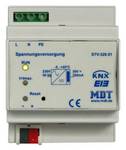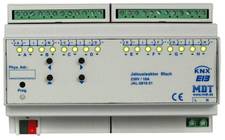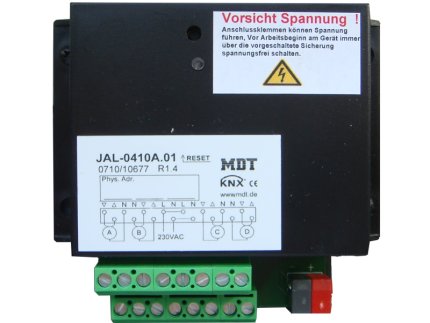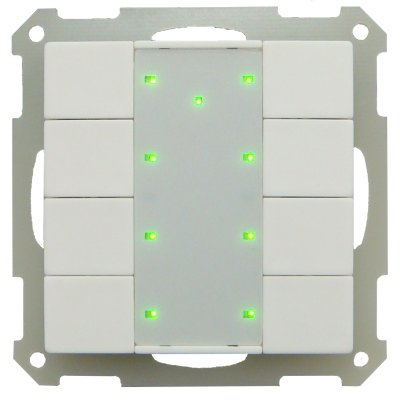EIB/KNX Basics
Contents
Topology
Connectivity
There are four ways EIB/KNX telegrams are transported
- Twisted Pair
- Powerline
- RF
- IR
We only look at twisted pair, as that is the most common.
Layout
A KNX TP network can be wired any way you want as long as you keep the following things in mind:
- DO NOT make a ring
- No more than 64 devices on a single bus
- Multiple bus can be connected together using line couplers
- Maximum distance is 350m per power supply unit (with a total maximum for a single bus of 1000m)
Devices Needed
Must Haves
Each KNX network NEEDS
- ETS - The programming software for the KNX bus. This is software you have to buy from Konnex (the committee behind KNX) and it is priced at around 400EUR. A demo can be downloaded as well.
- A KNX power supply
- An option to connect KNX to the computer. Easiest are KNX/IP gateways, as they can be far away from a computer
Other Devices
KNX devices can be split into two things. Actors and sensors. An actor receives a telegram to do stuff and reports status. A sensor sends out telegrams and has logic built it.
Actors
Most actor devices are available in so called REG format. They end up in your central wiring closet.
There are also devices available which live outside of the wiriing closet.
Sensors
Sensors are for example switches that you put on the wall to send out telegrams, or motion sensors (PIR) to send out telegrams whenever motion or a change of brightness is detected.
Cabling
There is dedicated KNX cable available (mostly green in color) which contains 2 pairs. Red/Black/White and Yellow. Normally you only use red and black. The other pair can be utilized for a parallel bus for other stuff, or as a backup in case something breaks in the first pair.




